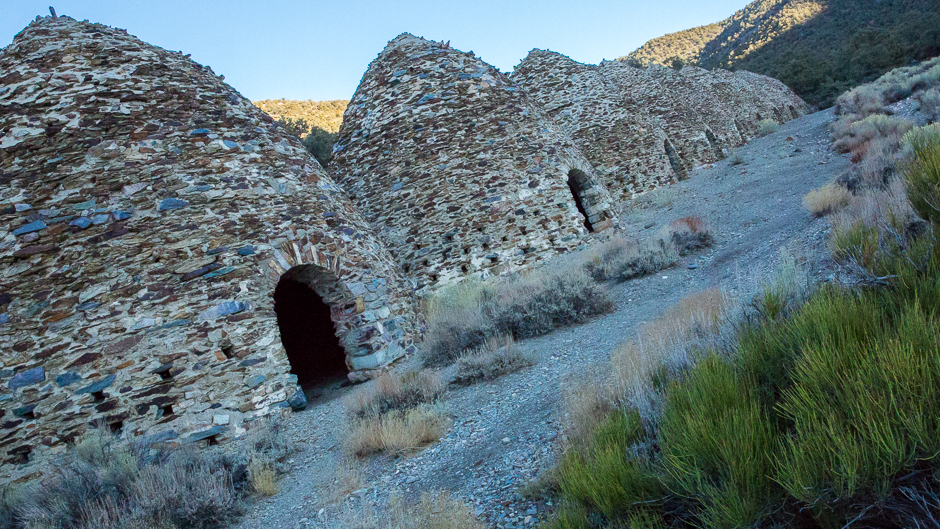Wildrose Charcoal Kilns
excerpt from “Charcoal Kilns Historic Structures Report” 1970
The charcoal kilns complex in Wildrose Canyon is among the more remarkable historical-architectural features of Death Valley National Park. These ten beehive shaped masonry structures, about 25 feet high, are believed to be the best known surviving example of such kilns to be found in the western states.
Modock Mines
The Wildrose Charcoal Kilns were completed in 1877 by the Modock Consolidated Mining Company to provide a source of fuel suitable for use in two smelters adjacent to their group of lead-silver mines in the Argus Range west of Panamint Valley, about 25 miles distant from the kilns. Although the mines themselves were worked intermittently until about 1900, there is no clear evidence that the charcoal kilns were operational after 1879. Evidently either other fuel sources were located or it was found to be more profitable to ship the raw ore elsewhere for processing. This short life may help to explain the remarkably good condition of these kilns, more than 100 years after their construction.
Hearst Connection
One of the incorporators of the Modock Company, operating out of San Francisco, was George Hearst, Father of William Randolph Hearst. George Hearst became famous as a mine expert, and his immense wealth was derived from interest in various mines. However, the Modock group was not one of his great successes. Apparently it did not gross much more than $3,000,000 over a period of thirty years. Beginning about 1881 the mines were leased to others. They have been inactive since the turn of the century.
Transporting Charcoal
Associated with the Modock mines were the neighboring towns of Darwin and Lookout, rough towns which out-lived the more famous Panamint City. A trail from Lookout to Wildrose Canyon was constructed. Charcoal was transported to the smelters by jackass pack-trains, though wagons also were probably involved.
Building & Working the Kilns
A company man named Morris built the Wildrose kilns. Actual documentable details of the construction job and the operation are lacking, as is confirmation that the labor force included American Indians and Chinese. The presence of Mexicans is amply indicated. It seems logical that, with a fairly large labor force of wood-cutters, charcoal-burners and haulers, there would be a “settlement” of some kind, with tents and/or log cabins, and there is one hint of a town of “Wild Rose.” It was probably an ephemeral affair. Its exact location is unknown, but a fair guess would be that it was a summer camp near the kilns, where water would have to be hauled in; or else it was located in the vicinity of the life-giving Wildrose Spring, several miles downhill from the kilns.
Why Charcoal?
Charcoal is a black, porous form of carbon prepared by charring wood or organic matter in a kiln or retort from which air is excluded. Charcoal produced from wood retains its basic shape and texture but is converted to a 96% pure carbon content. In the 19th century and earlier, charcoal was used for a furnace fuel because it burned more slowly than wood and created a much greater heat that was needed for the refining of ores.
https://www.nps.gov/deva/learn/historyculture/charcoalkilns.htm


